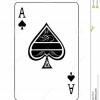//--------------------------------------------------------------------------------------
// File: Tutorial01.cpp
//
// This application demonstrates creating a Direct3D 11 device
//
// http://msdn.microsoft.com/en-us/library/windows/apps/ff729718.aspx
//
// THIS CODE AND INFORMATION IS PROVIDED "AS IS" WITHOUT WARRANTY OF
// ANY KIND, EITHER EXPRESSED OR IMPLIED, INCLUDING BUT NOT LIMITED TO
// THE IMPLIED WARRANTIES OF MERCHANTABILITY AND/OR FITNESS FOR A
// PARTICULAR PURPOSE.
//
// Copyright (c) Microsoft Corporation. All rights reserved.
//--------------------------------------------------------------------------------------
#include <windows.h>
#include <d3d11_1.h>
#include <directxcolors.h>
#include "resource.h"
using namespace DirectX;
//--------------------------------------------------------------------------------------
// Global Variables
//--------------------------------------------------------------------------------------
HINSTANCE g_hInst = nullptr;
HWND g_hWnd = nullptr;
D3D_DRIVER_TYPE g_driverType = D3D_DRIVER_TYPE_NULL;
D3D_FEATURE_LEVEL g_featureLevel = D3D_FEATURE_LEVEL_11_0;
ID3D11Device* g_pd3dDevice = nullptr;
ID3D11Device1* g_pd3dDevice1 = nullptr;
ID3D11DeviceContext* g_pImmediateContext = nullptr;
ID3D11DeviceContext1* g_pImmediateContext1 = nullptr;
IDXGISwapChain* g_pSwapChain = nullptr;
ID3D11RenderTargetView* g_pRenderTargetView = nullptr;
//--------------------------------------------------------------------------------------
// Forward declarations
//--------------------------------------------------------------------------------------
HRESULT InitWindow( HINSTANCE hInstance, int nCmdShow );
HRESULT InitDevice();
void CleanupDevice();
LRESULT CALLBACK WndProc( HWND, UINT, WPARAM, LPARAM );
void Render();
//--------------------------------------------------------------------------------------
// Entry point to the program. Initializes everything and goes into a message processing
// loop. Idle time is used to render the scene.
//--------------------------------------------------------------------------------------
int WINAPI wWinMain( _In_ HINSTANCE hInstance, _In_opt_ HINSTANCE hPrevInstance, _In_ LPWSTR lpCmdLine, _In_ int nCmdShow )
{
UNREFERENCED_PARAMETER( hPrevInstance );
UNREFERENCED_PARAMETER( lpCmdLine );
if( FAILED( InitWindow( hInstance, nCmdShow ) ) )
return 0;
if( FAILED( InitDevice() ) )
{
CleanupDevice();
return 0;
}
// Main message loop
MSG msg = {0};
while( WM_QUIT != msg.message )
{
if( PeekMessage( &msg, nullptr, 0, 0, PM_REMOVE ) )
{
TranslateMessage( &msg );
DispatchMessage( &msg );
}
else
{
Render();
}
}
CleanupDevice();
return ( int )msg.wParam;
}
//--------------------------------------------------------------------------------------
// Register class and create window
//--------------------------------------------------------------------------------------
HRESULT InitWindow( HINSTANCE hInstance, int nCmdShow )
{
// Register class
WNDCLASSEX wcex;
wcex.cbSize = sizeof( WNDCLASSEX );
wcex.style = CS_HREDRAW | CS_VREDRAW;
wcex.lpfnWndProc = WndProc;
wcex.cbClsExtra = 0;
wcex.cbWndExtra = 0;
wcex.hInstance = hInstance;
wcex.hIcon = LoadIcon( hInstance, ( LPCTSTR )IDI_TUTORIAL1 );
wcex.hCursor = LoadCursor( nullptr, IDC_ARROW );
wcex.hbrBackground = ( HBRUSH )( COLOR_WINDOW + 1 );
wcex.lpszMenuName = nullptr;
wcex.lpszClassName = L"TutorialWindowClass";
wcex.hIconSm = LoadIcon( wcex.hInstance, ( LPCTSTR )IDI_TUTORIAL1 );
if( !RegisterClassEx( &wcex ) )
return E_FAIL;
// Create window
g_hInst = hInstance;
RECT rc = { 0, 0, 640, 480 };
AdjustWindowRect( &rc, WS_OVERLAPPEDWINDOW, FALSE );
g_hWnd = CreateWindow( L"TutorialWindowClass", L"Direct3D 11 Tutorial 1: Direct3D 11 Basics", WS_OVERLAPPEDWINDOW,
CW_USEDEFAULT, CW_USEDEFAULT, rc.right - rc.left, rc.bottom - rc.top, nullptr, nullptr, hInstance,
nullptr );
if( !g_hWnd )
return E_FAIL;
ShowWindow( g_hWnd, nCmdShow );
return S_OK;
}
//--------------------------------------------------------------------------------------
// Called every time the application receives a message
//--------------------------------------------------------------------------------------
LRESULT CALLBACK WndProc( HWND hWnd, UINT message, WPARAM wParam, LPARAM lParam )
{
PAINTSTRUCT ps;
HDC hdc;
switch( message )
{
case WM_PAINT:
hdc = BeginPaint( hWnd, &ps );
EndPaint( hWnd, &ps );
break;
case WM_DESTROY:
PostQuitMessage( 0 );
break;
default:
return DefWindowProc( hWnd, message, wParam, lParam );
}
return 0;
}
//--------------------------------------------------------------------------------------
// Create Direct3D device and swap chain
//--------------------------------------------------------------------------------------
HRESULT InitDevice()
{
HRESULT hr = S_OK;
RECT rc;
GetClientRect( g_hWnd, &rc );
UINT width = rc.right - rc.left;
UINT height = rc.bottom - rc.top;
UINT createDeviceFlags = 0;
#ifdef _DEBUG
createDeviceFlags |= D3D11_CREATE_DEVICE_DEBUG;
#endif
D3D_DRIVER_TYPE driverTypes[] =
{
D3D_DRIVER_TYPE_HARDWARE,
D3D_DRIVER_TYPE_WARP,
D3D_DRIVER_TYPE_REFERENCE,
};
UINT numDriverTypes = ARRAYSIZE( driverTypes );
D3D_FEATURE_LEVEL featureLevels[] =
{
D3D_FEATURE_LEVEL_11_1,
D3D_FEATURE_LEVEL_11_0,
D3D_FEATURE_LEVEL_10_1,
D3D_FEATURE_LEVEL_10_0,
};
UINT numFeatureLevels = ARRAYSIZE( featureLevels );
DXGI_SWAP_CHAIN_DESC sd;
ZeroMemory( &sd, sizeof( sd ) );
sd.BufferCount = 1;
sd.BufferDesc.Width = width;
sd.BufferDesc.Height = height;
sd.BufferDesc.Format = DXGI_FORMAT_R8G8B8A8_UNORM;
sd.BufferDesc.RefreshRate.Numerator = 60;
sd.BufferDesc.RefreshRate.Denominator = 1;
sd.BufferUsage = DXGI_USAGE_RENDER_TARGET_OUTPUT;
sd.OutputWindow = g_hWnd;
sd.SampleDesc.Count = 1;
sd.SampleDesc.Quality = 0;
sd.Windowed = TRUE;
for( UINT driverTypeIndex = 0; driverTypeIndex < numDriverTypes; driverTypeIndex++ )
{
g_driverType = driverTypes[driverTypeIndex];
hr = D3D11CreateDeviceAndSwapChain( nullptr, g_driverType, nullptr, createDeviceFlags, featureLevels, numFeatureLevels,
D3D11_SDK_VERSION, &sd, &g_pSwapChain, &g_pd3dDevice, &g_featureLevel, &g_pImmediateContext );
if ( hr == E_INVALIDARG )
{
// DirectX 11.0 platforms will not recognize D3D_FEATURE_LEVEL_11_1 so we need to retry without it
hr = D3D11CreateDeviceAndSwapChain( nullptr, g_driverType, nullptr, createDeviceFlags, &featureLevels[1], numFeatureLevels - 1,
D3D11_SDK_VERSION, &sd, &g_pSwapChain, &g_pd3dDevice, &g_featureLevel, &g_pImmediateContext );
}
if( SUCCEEDED( hr ) )
break;
}
if( FAILED( hr ) )
return hr;
// Obtain the Direct3D 11.1 versions if available
hr = g_pd3dDevice->QueryInterface( __uuidof( ID3D11Device1 ), reinterpret_cast<void**>( &g_pd3dDevice1 ) );
if ( SUCCEEDED(hr) )
{
(void)g_pImmediateContext->QueryInterface( __uuidof( ID3D11DeviceContext1 ), reinterpret_cast<void**>( &g_pImmediateContext1 ) );
}
// Create a render target view
ID3D11Texture2D* pBackBuffer = nullptr;
hr = g_pSwapChain->GetBuffer( 0, __uuidof( ID3D11Texture2D ), reinterpret_cast<void**>( &pBackBuffer ) );
if( FAILED( hr ) )
return hr;
hr = g_pd3dDevice->CreateRenderTargetView( pBackBuffer, nullptr, &g_pRenderTargetView );
pBackBuffer->Release();
if( FAILED( hr ) )
return hr;
g_pImmediateContext->OMSetRenderTargets( 1, &g_pRenderTargetView, nullptr );
// Setup the viewport
D3D11_VIEWPORT vp;
vp.Width = (FLOAT)width;
vp.Height = (FLOAT)height;
vp.MinDepth = 0.0f;
vp.MaxDepth = 1.0f;
vp.TopLeftX = 0;
vp.TopLeftY = 0;
g_pImmediateContext->RSSetViewports( 1, &vp );
return S_OK;
}
//--------------------------------------------------------------------------------------
// Render the frame
//--------------------------------------------------------------------------------------
void Render()
{
// Just clear the backbuffer
g_pImmediateContext->ClearRenderTargetView( g_pRenderTargetView, Colors::MidnightBlue );
g_pSwapChain->Present( 0, 0 );
}
//--------------------------------------------------------------------------------------
// Clean up the objects we've created
//--------------------------------------------------------------------------------------
void CleanupDevice()
{
if( g_pImmediateContext ) g_pImmediateContext->ClearState();
if( g_pRenderTargetView ) g_pRenderTargetView->Release();
if( g_pSwapChain ) g_pSwapChain->Release();
if( g_pImmediateContext1 ) g_pImmediateContext1->Release();
if( g_pImmediateContext ) g_pImmediateContext->Release();
if( g_pd3dDevice1 ) g_pd3dDevice1->Release();
if( g_pd3dDevice ) g_pd3dDevice->Release();
}
I've referenced the code against my book "Introduction to 3D Grame Programming" by Frank D. Luna. I think I have a good understanding of what it does and now my question is about setting up a viewing frustum. I would like to set up a viewpoint from somewhere like (0,0,100) looking down the Z axis to the point (0,0,0) so I can draw some lines, curves and polygonal areas on the XY plane at Z=0. I will need to know the coordinates of the rectangular area that is visible by the viewpoint on the XY plane at Z=0.
From my studies on frustums there is a front clipping plane and a back clipping plane. I am looking at a diagram:
http://msdn.microsoft.com/en-us/library/ff634570.aspx
so right now it is not clear to me which clipping plane is Z=0 or how to find the coordinates of the clipping plane rectangle.
Thanks for any help on this...







